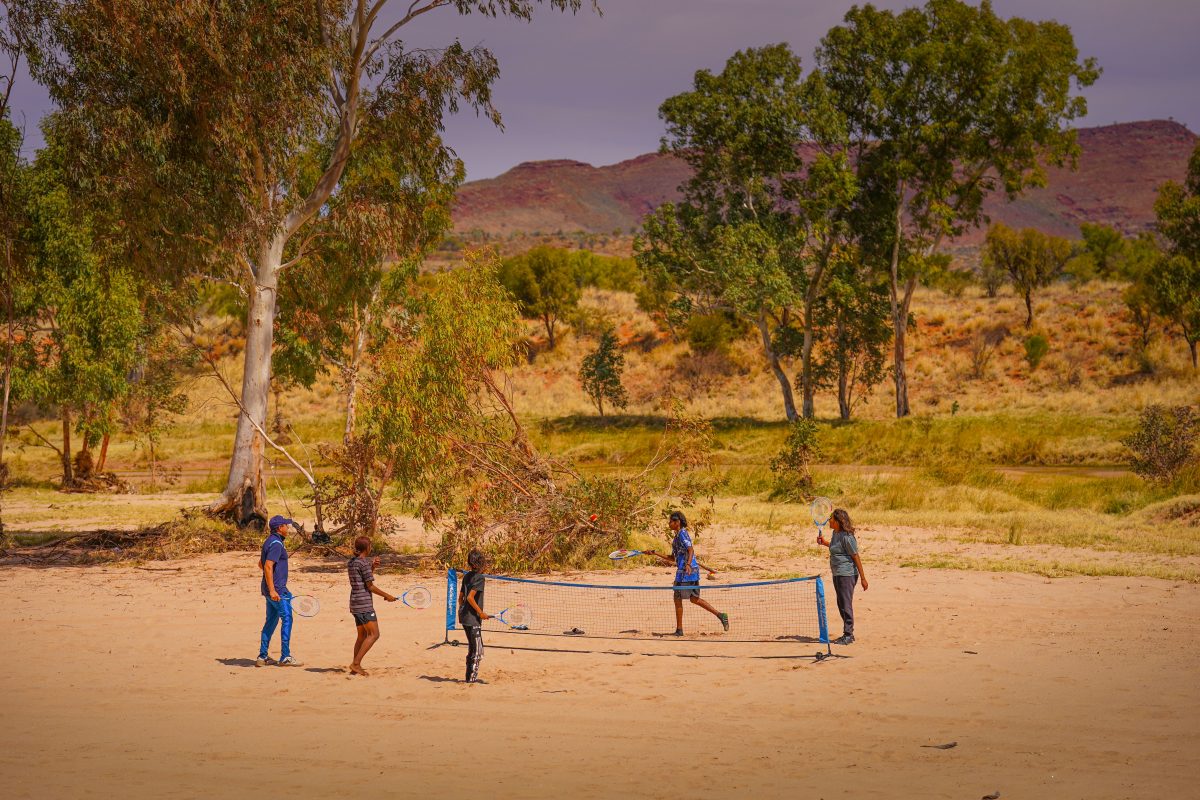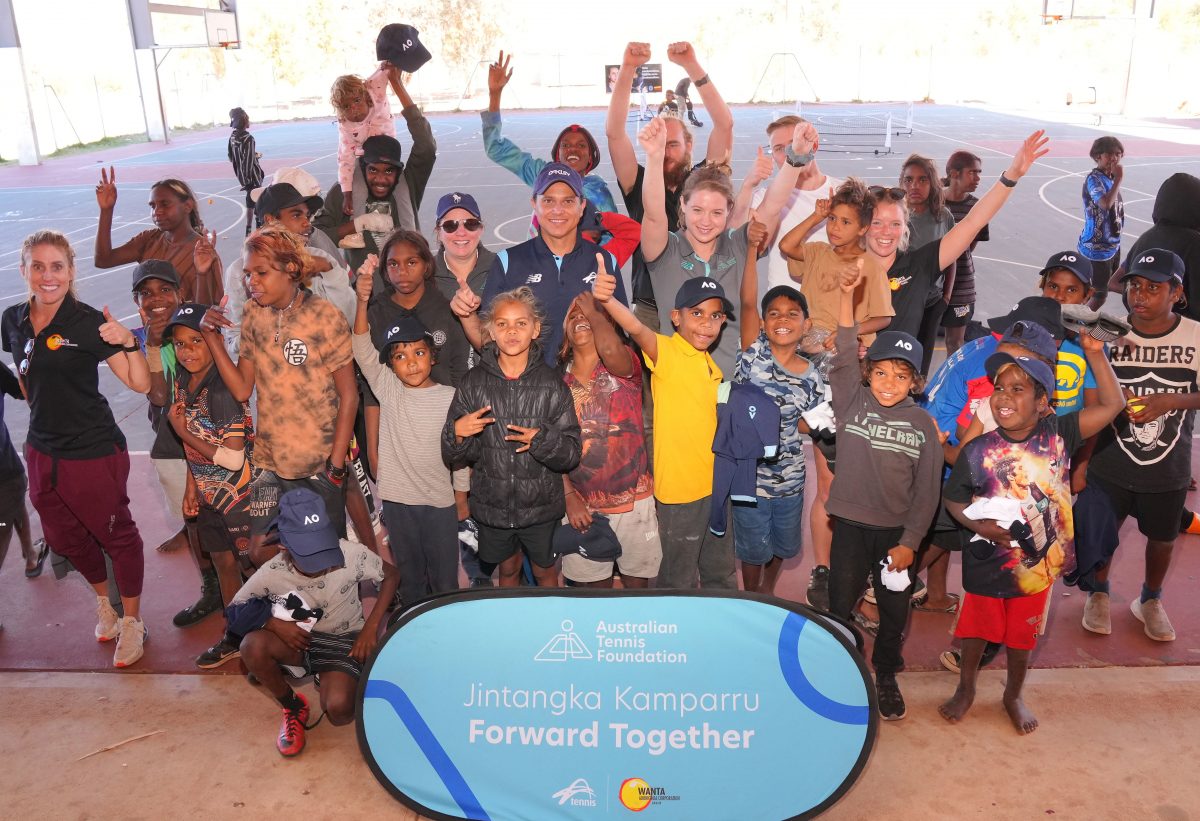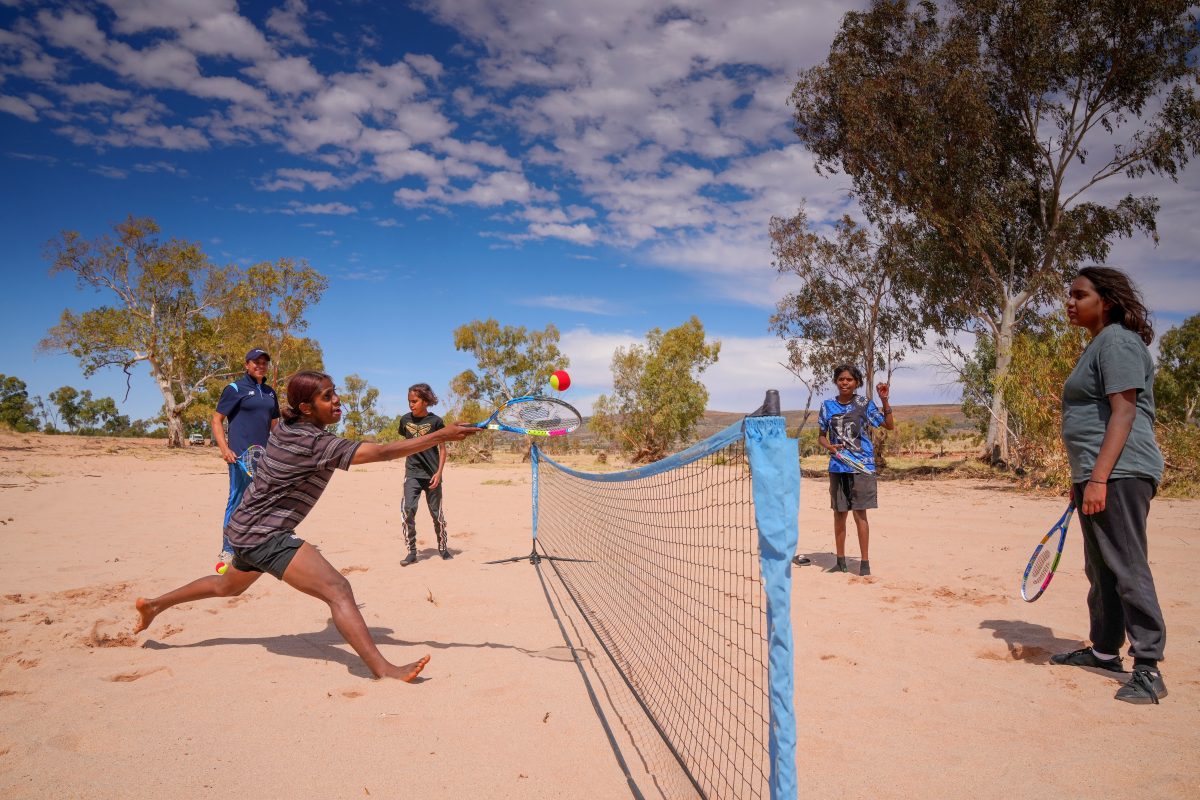The community of Soapy Bore lies three hours from Alice Springs in the Utopia Homelands of Central Australia. It is made up of half a dozen houses, a grassless football field and a one-room school and this year it became the most remote part of Australia to have its first taste of tennis.
"I had one student ask me what this game was called," said Zac Murfet, who runs the after-school sports program. "He had never seen it before."
Under a clear outback sky, a small net was stretched out and racquets and balls given to a handful of kids. Although they had no experience of the sport, within minutes they were captivated, and their cries of excitement spread.

The clinic was overseen by Anzac Leidig, who travels hundreds of kilometres each year through the Northern Territory running the Indigenous program for Tennis NT. His work takes him from the tropical Tiwi Islands off the northern coast to Soapy Bore and almost everywhere in between.
Rarely is there a tennis court to play on - instead he adapts, setting up to play wherever he can, such as gyms, carparks, school halls or even roads.
As a coach he can't help but spot the natural talent, but finding a potential champion isn't his reward.
"I see these Indigenous kids come out of their shell," he said. "Some take longer because everyone is different, but it is my favourite thing to see the kids slowly come over say hello and then maybe ask for a hand. That growth towards feeling comfortable in your own skin, that is my favourite part."
The tennis program called Jintangka Kamparru (Forward Together) spreads over nine Aboriginal communities in Central Australia and is a partnership between the Australian Tennis Foundation, Tennis NT and Wanta Aboriginal Corporation.
The program is funded for four years by the Australian Tennis Foundation - Tennis Australia's official charity - as part of its aim to inspire brighter futures for children and young people through tennis.

The young people living in desert communities face social and economic challenges rarely seen in other parts of the country.
One of the main roles of Wanta is to work with young Aboriginal people to get them into school and one of the tools used is sport and recreation. Each school term a sport is chosen, and young people are able to join in for free as long as they have a commitment to education.
Tennis is now one of the four sports and the Wanta Regional Manager Tenille Rickard calls it a special partnership.
"Tennis NT are coming out here and so Wanta is able to bring our staff from these remote communities to be upskilled and build their capacity in coaching, umpiring, guiding and mentoring young Aboriginal people," she said. "By upskilling local Indigenous staff members, it makes it more available to teach tennis in language and in a culturally appropriate manner."
The tennis resource material has been translated into Walpiri and Kriol - the first-time that instructions have been available in Indigenous languages.
"This tennis program is unique to the Northern Territory but also Australia wide," said Tennis NT Inclusion and Diversity Manager Beth Caird.
"We have taken a long and considered approach to working with Wanta staff, Elders and Traditional Owners to really do that community consultation to ask what would be best for the young people."
The size of the tennis sessions varies. At Arlparra there were 70 kids, while at Soapy Bore there were only seven. But the enthusiasm was everywhere and the energy seemed limitless.
"They are amazing, amazing kids out here," said Rickard. "Beautiful natured and cheeky. They have got a bit of everything, full of life and full of energy."

The effort of driving along roads of fine red dust to reach Soapy Bore seemed worth it. As he packed up the net and racquets, Anzac Leidig reflected on a hectic hour spent playing tennis in the most unlikely location.
"Some of the kids really connected with tennis straight away which was amazing," he said. "I find it is always the case and we just feed off each other's energy."
For the kids it was time to return to their classroom. Their teacher Vicki Bullock believed they learnt a valuable lesson that morning.
"These children get very little opportunity to interact with the outside world," she explained. "They are very isolated. So, when we get somebody come out, they are so excited. It is fantastic because after trying tennis and having a good experience, then they want to try something else instead of just sticking to kick the can."
Thanks to the generosity of tennis lovers via the Australian Tennis Foundation, those lessons will continue to be taught in remote desert communities for several years to come.
This article originally appeared in the October-November 2022 issue of Australian Tennis Magazine.
